Creeping Thyme Lawn (Pros and Cons & Growing Tips)
Here we share our creeping thyme lawn guide, including what it is, pros & cons, planting red and purple thyme, how to propagate a lawn from seeds, and growing tips.

Are you tired of mowing your turf lawn or hiring someone to do it for you? Do you hate the sight of dehydrated grass during the hot summer? If your answer to both questions is yes, it is time to redo your turf lawn. Why not replace turf with creeping thyme lawn? Getting rid of your turf lawn and replacing it with this option may be the best alternative.
What Is A Creeping Thyme Lawn
Creeping thyme is a creeping perennial plant that can be used as an ornamental groundcover. Creeping thyme, also known as Thymus serpyllum is sometimes referred to as an evergreen plant because it does not lose its leaves over the winter in many different climates.
This type of herb typically grows 2 to 3 inches tall and has fragrant, aromatic leaves with bell shaped flowers that range from pink to purple, according to the NC plant toolbox.
Creeping thyme is the best option as you are not just planting grass but are making a lush herb garden. Imagine breathing in the air full of lovely aromatic scents.
When crushed, the tiny leaves give off a pleasant aroma. You will be inhaling clean and healthy air all the time and the plant is easy to grow and nurture. When it is newly planted, there will be empty spaces. But, as the plant grows, it will eventually fill the gaps.
Thyme looks (and smells!) beautiful, and grows fast; a spring planting will see a pleasing effect by the end of summer, and in a year it should be at its full glory. – RHS The Urban Gardener, Matt James
This option can transform lawns into blooming outdoor herb gardens. Tiny flowers perched on flat stems paint your yard every day. They come in white, pink, rose red, and purple.
Expect bees buzzing around your lawn, ready to pollinate other plants. Vegetables and fruit-bearing plants will greatly benefit from planting close to this green carpet ground cover.
People living in areas where deer can roam freely will never worry about these animals grazing on their lawns. Although the plant looks palatable, deer simply do not favor its taste.
Creeping Thyme Groundcover Pros And Cons
Creeping thyme lawn is an ideal plant to cover the bare ground. It can be propagated by seeds or by cuttings. The cuttings are placed on pots, and they can be purchased from nurseries. Also, they are planted at an interval. When some cuttings do not survive, they must be replaced immediately to prevent gaps between the plants.
Once they have started growing, they grow and creep fast, covering the care ground like green mats with lovely blooms of white, pink, purple, or rose red. Yet, like any other plants used as ground cover, creeping thyme has pros and cons.
Pros of Creeping Thyme
• Easy to cultivate: You do not have to cover the ground with cuttings of this plant. They can be planted at certain intervals. The ideal distance between each cutting plant is 12 to 24 inches.
When planted in a sunny area where the soil drains fast, the garden creeper will thrive and grow fast. It takes one year for the plants to cover the ground and get established.
• Compatible with any weather: One of the issues with having a grass lawn is it requires plenty of water to stay alive during the hot summer months. Water bills can add up to a considerable amount.
With this ground cover, the lawn remains verdant during the summer season. It needs minimal water to survive. The plant is sturdy and continues to thrive even in winter. It is frost and moisture-resistant.
• Not affected by traffic: While other plants can be damaged by children and pets romping on them, this flowering carpet can withstand the pressure of running feet. The stems may bend but do not break. After the disturbance, they are back to their normal self and continue to spread and bloom.
• No replanting is needed: Creeping thymes are perennials, so they do not die each year. Instead, they live for more than a year. Because they grow and spread continuously, you do not have to be an experienced gardener and replant new ones each year.
• They are easy to maintain: The plants reach a maximum height of two to four inches only. Trimming is not necessary. You can have them for years without worrying about your lawn looking like a mini-forest.
• Beautify your lawn: The grass substitute can look like a blanket of tiny and lovely blooms. During the peak season, the lawn is covered with a blanket of pink, white, and other colors, depending on the variety that you planted.
• Help in the pollination process: The blooms in your lawn attract bees. You will notice that if you have other plants near the lawn, they easily bear flowers and fruits. This is because the bees pollinate them.
• Give off a pleasant aroma: Most types of artificial grass and turf lawns can retain unpleasant smells. You have to wash them frequently. The aromatic herbal blanket emits a certain fragrance like other herbs. It can be dried and made into a tea or used when cooking.
• Prevents weeds from growing: An established creeping thyme lawn does not need weeding. The dense plant layer hampers the growth of weeds.
• Does not need fertilizer: The maintenance-free covering can grow well without fertilizer or other nutrients. This means low gardening maintenance costs.
• Remains green all year round: You can have a green lawn despite the season. Because it agrees with any kind of weather, it remains the color of emerald even during winter.
Cons of Creeping Thyme
• The roots can be infected with botrytis and rot: When the plant grows in a shaded area where the soil is always moist, the roots can rot, and the plant will die. The diseased roots must be removed and thrown away. This will help control the infection.
• Susceptible to harmful insects: This herb isn’t known as one of the plants that repels bees, aphids, spider mites, and other insects that can harm it. To keep the garden plant healthy, insect repellents, such as insecticidal soaps, neem oil, or the introduction of beneficial bugs may be needed.
• Having this type of lawn is costly: Establishing this decorative plant greenery can be costly. If you have a wide lawn, you will need lots of cuttings. If you do not have time to plant the cuttings, you must hire gardeners to do it and pay them.
• It attracts lots of bees: While bees are good pollinators, too many of them can be a nuisance. Some people may be allergic to them. This bee-friendly flowering ground cover comes in several hues, with the most popular among them being red and purple.
Red Thyme Lawn
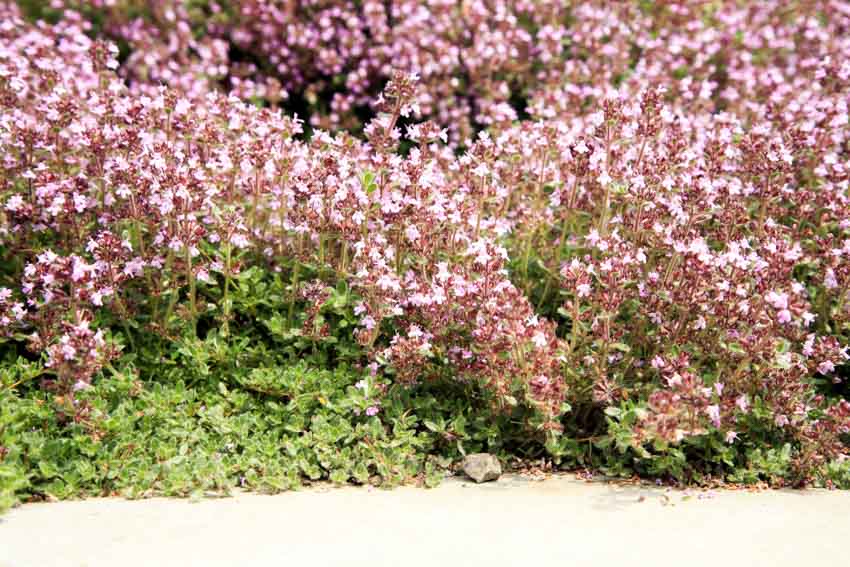
Red creeping thyme is an ideal and attractive ground cover for gardeners. Instead of slowly spreading, the stems grow horizontally. Once it touches the soil, new roots grow on the stem. Do not water it frequently. The roots might rot if it is always moist. Wait until the soil is dry before watering again.
You can fertilize it once a year, especially during spring. Get rid of pest animals such as slugs in your garden. They can damage the leaves of the plants. During spring, prune the plants. Cut back the stems that have wandered away from the edges of your lawn for a neat look.
Cultivating red creeping thyme is the same as cultivating other varieties with blooms of different colors. With this hardy perennial, you do not only have an excellent ground cover but blossoms that also make your lawn ablaze with red color.
Purple Thyme
Thymus praecox is another variety that bears purple blooms. It is believed to have originated from Asia, North Africa, and Europe. Just like other creeping varieties, this one also grows well when there is plenty of sunlight and the soil drains well. One can imagine walking on a soft purple blanket of blooms that give off a pleasant aroma when one steps on it.
Aside from being an excellent ground cover, this grass is an excellent pollinator. It is also safe for humans to ingest, and some people use its dried leaves as tea. It is also used to give a unique aroma to some dishes.
Thyme Seed For Lawns
Can you propagate creeping thyme lawn using seeds? The answer is yes. To make sure that the seeds will sprout and grow into healthy plants, you must prepare the so soil properly.
Clean the area where you want to plant the seeds. Remove all debris first. If there are weeds, pull them out, including the roots. Loosen and turn over the soil using a spading fork. Turn the soil until no clumps are left. You can add compost and other materials to make the soil good for the new plants.
Put soil into containers and sow the seeds. Use as many containers as you can if you are planting a wide area. Wait until the seeds germinate after 14 to 21 days. You can now transfer the seedlings to the lawn.
Water the plants regularly until they grow and establish roots. As they grow, they will creep and spread on the lawn until it is full of creeping plants.
Replace a Lawn With a Red Creeping-Thyme Lawn
If you love red, why not replace a lawn with a red creeping thyme lawn? It is simple. All you have to do is remove the grass or artificial turf. Then, prepare your lawn for planting.
Add some meal bones or compost once the lawn is ready. This will enrich the soil and ensure the fast growth of the new plants. You can use cuttings of creeping red thyme lawn, or you can plant seeds. Always plant in an area where there is enough sunlight and proper drainage.
Water the plants when the soil is already dry from the previous watering, and you can then enjoy your decorative plant layer in full bloom.
How To Plant a Thyme Lawn
As mentioned earlier, planting creeping thyme lawn is not as complicated as one thinks. However, it is more laborious than installing a turf lawn. It does best in soil that has a neutral to slightly alkaline pH and is well draining. It likes full sun but can handle some shade.
Always start by preparing the soil properly. It must be cleaned, turned, loosened, and enriched before planting. If you are planting thyme seeds, they should be placed one inch apart. The cuttings must be eight inches apart.
Generally, this herb takes one year to become established and will begin to spread in the second year. You can forget about fertilizing, watering regularly, and mowing your lawn. The ground cover will be able to thrive without so much nurturing.
Is Thyme Hard To Maintain?
It is easy to maintain. It is compatible with any season and type of soil as long as it is not always wet. Although it needs sunlight, you can plant it in the shady parts of the lawn.
Does Thyme Attract Bugs?
These herbs are known to attract helpful insects like butterflies, bugs, flies, and bees. These insects facilitate pollination and help plants bear flowers and fruits.
Is Thyme Invasive?
It grows up to a few inches tall but does have invasive roots that can choke out other plants. While it spreads on the lawn, its limited height and growth rate is generally not harmful to other plants. If you have a variety that grows 6 to 8 inches tall, pruning it will prevent it from overwhelming other plants.
Does Thyme Make A Good Ground Cover?
Creeping thyme makes a good ground cover because it prevents the growth of weeds. It also gives off a nice aroma and bears abundant colorful blooms. You can find ornamental groundcover varieties with foliage available in red, purple, pink, rose, and blue.
Is Thyme Toxic To Dogs And Cats?
This herb is not toxic to dogs and cats. Your pets might love playing on the soft ground cover.
Can You Walk On Thyme?
Walking on this kind of ground cover is a nice experience. The ground feels soft and cool. You can smell the aroma of the decorative greenery as some leaves or stems are crushed while you walk on them.
Red Carpet Thyme Versus Grass
Red creeping thyme lawn is better than a grass lawn for landscaping. While grass can have an unpleasant odor, this aromatic ground cover releases a fragrant swell. You do not need to water the lawn after this ground cover has become established, (usually the first year) unless there are extended periods with no rainfall.
Grass needs to be watered, especially during the dry and hot months. Red creeping thyme can live even with less water. While this plant has medicinal value, grass does not have any. Humans and animals can eat it, but they cannot ingest grass.
A few other alternative plants that can be mixed in with this herb are Irish moss, miniature daisies, Corsican mint, chamomille, blue star creeper, creeping Jenny, and Sedums. It’s not recommended to plant clover with Thyme as it tends to grow faster and choke it out.
So, if you think it is time to change your lawn ground cover, there are many reasons to choose a creeping thyme lawn for your groundcover. You can choose one color or have your lawn in different colors. Aside from its aesthetic value, it has medicinal and culinary value as well.


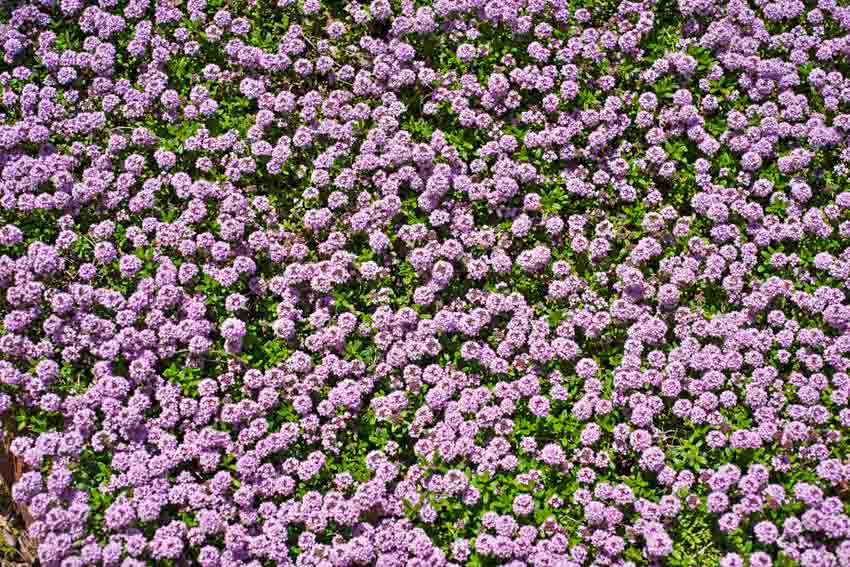

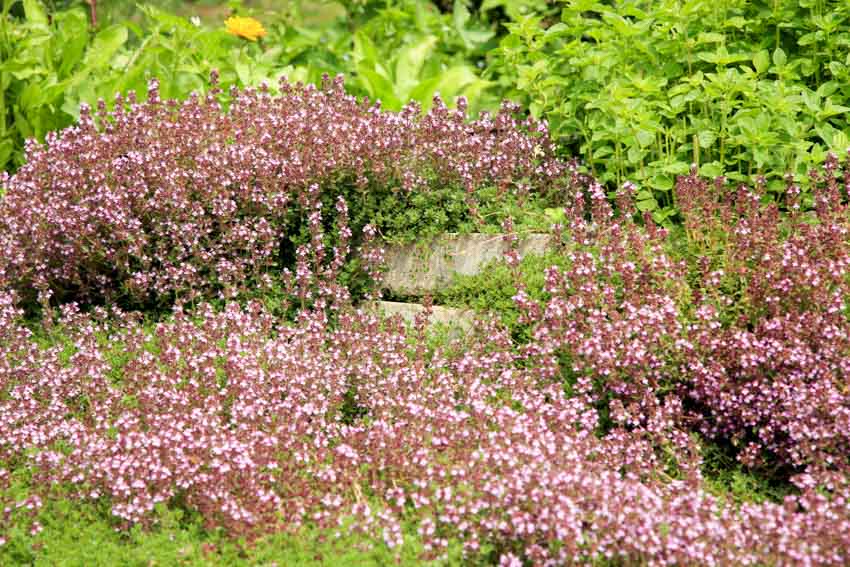
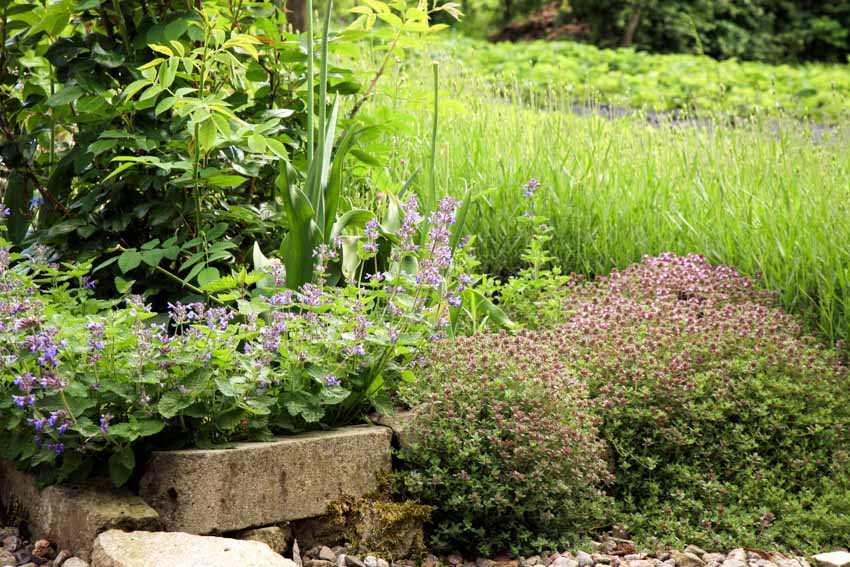
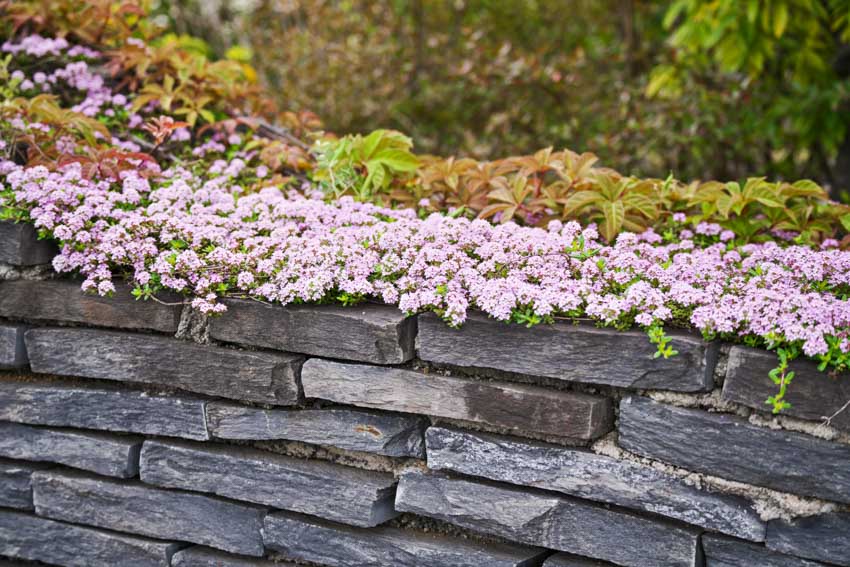
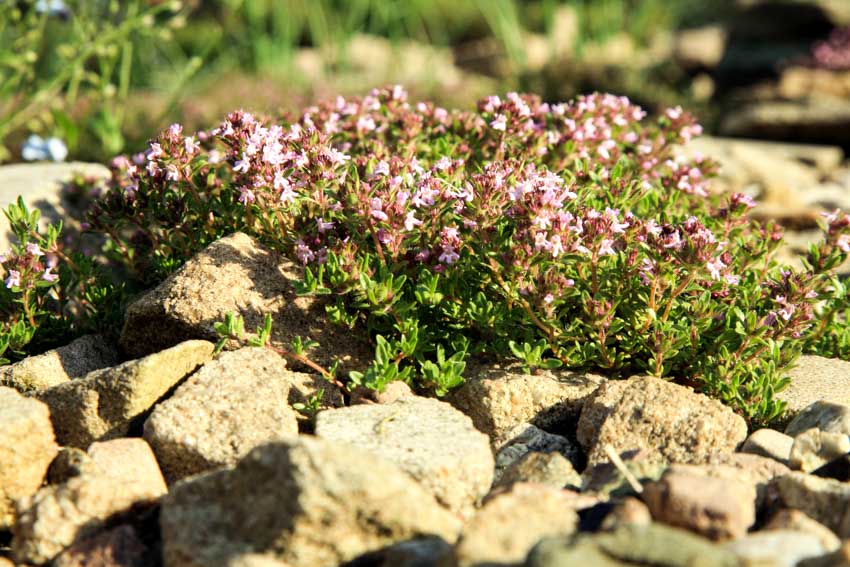
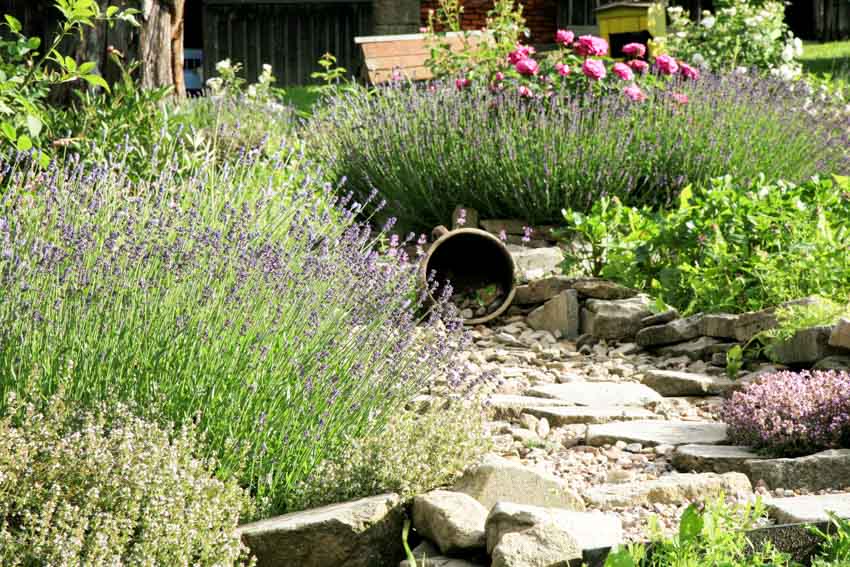
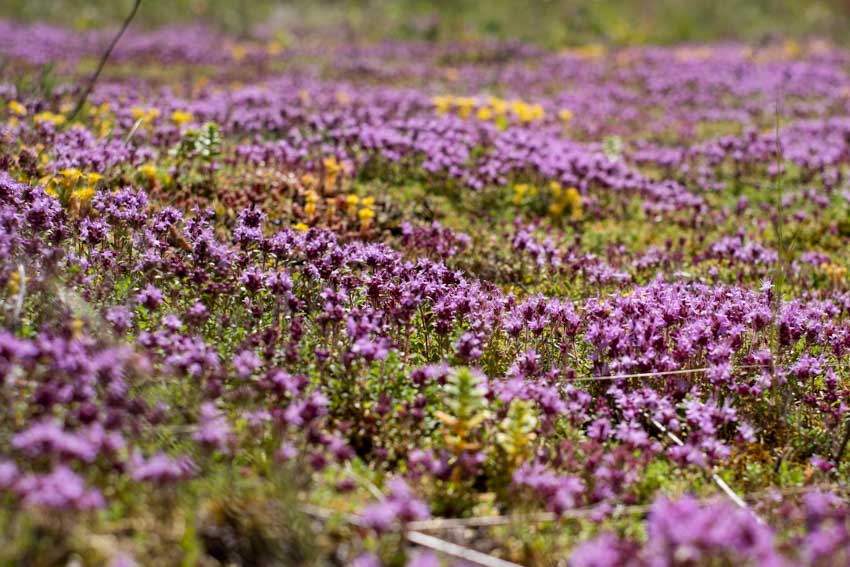




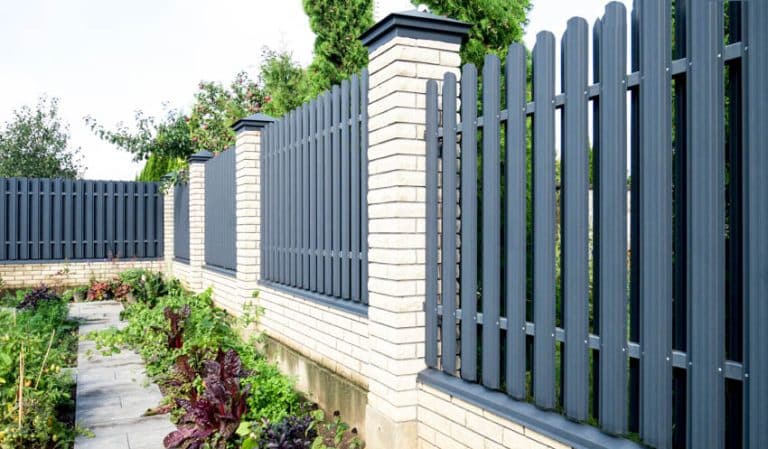
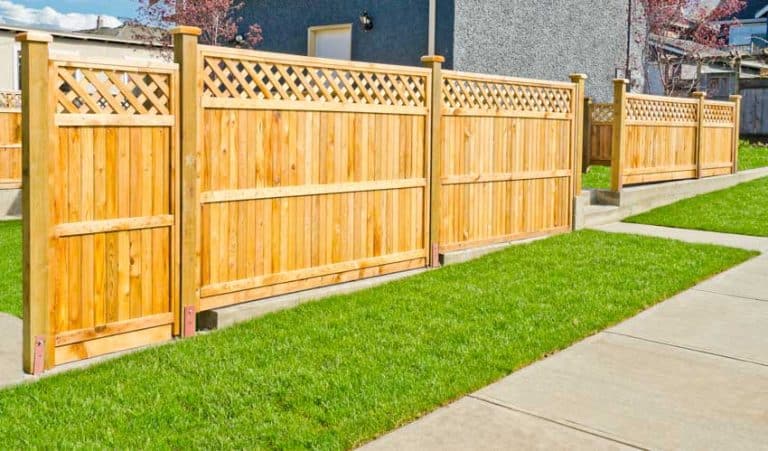

I am thinking of red thyme as a lawn but confused as to how it spreads. You put in a plant – and it grows to say 18″ wide, but will it spread itself further than that? I.e. is it like zozis (sp) grass or mint where it will just spread and take over so you have to block it from spreading or you spread it by putting in more plugs. So you would NOT have to put in something to stop it spreading?
Thanks